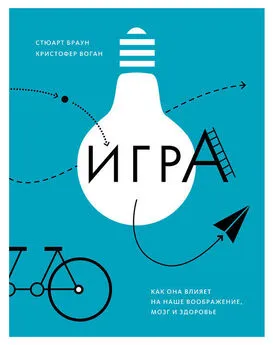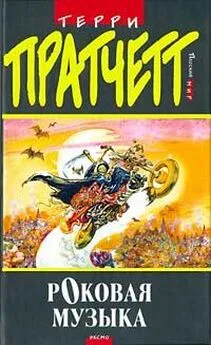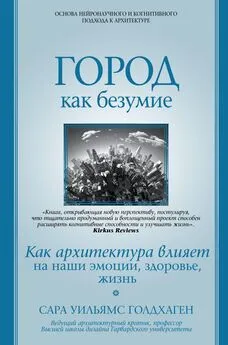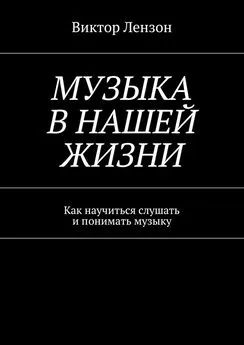Виктория Уильямсон - Мы – это музыка. Как музыка влияет на наш мозг, здоровье и жизнь в целом
- Название:Мы – это музыка. Как музыка влияет на наш мозг, здоровье и жизнь в целом
- Автор:
- Жанр:
- Издательство:Манн, Иванов и Фербер
- Год:2016
- Город:Москва
- ISBN:978-5-00057-660-1
- Рейтинг:
- Избранное:Добавить в избранное
-
Отзывы:
-
Ваша оценка:
Виктория Уильямсон - Мы – это музыка. Как музыка влияет на наш мозг, здоровье и жизнь в целом краткое содержание
Прочтение этой книги, возможно, даст идеи, как правильно применить силу музыки в ваших обстоятельствах.
Эта книга будет интересна в первую очередь тем, кто интересуется влиянием музыки на человеческую психику и физиологию.
На русском языке публикуется впервые.
Мы – это музыка. Как музыка влияет на наш мозг, здоровье и жизнь в целом - читать онлайн бесплатно полную версию (весь текст целиком)
Интервал:
Закладка:
39
Brandler, S., and Rammsayer, T.H. (2003), ‘Differences in Mental Abilities between Musicians and Non-musicians’, Psychology of Music , 31 (2), 123–138.
40
Schellenberg, E.G. (2004), ‘Music lessons enhance IQ’, Psychological Science , 15 (8), 511–514.
41
Schellenberg, E.G. (2006), ‘Long-term positive associations between music lessons and IQ’, Journal of Educational Psychology, 98, 457–468.
42
Weiss, M.W., and Schellenberg, E.G. (2011), ‘Augmenting cognition with music’, in I. Segev and H. Markram (eds.), Augmenting cognition (pp. 103–125). Lausanne, Switzerland: EPFL Press.
43
Trainor, L.J., Shahin, A., and Roberts, L.E. (2003), ‘Effects of musical training on the auditory cortex in children’, Annals of the New York Academy of Sciences , 999, 506–513. Shahin, A., et al. (2008), ‘Music training leads to the development of timbre-specific gamma band activity’, NeuroImage , 41 (1), 113–122.
44
Krumhansl, C.L. (1990), Cognitive foundations of musical pitch . New York: Oxford University Press.
45
Strait, D., and Kraus, N. (2011), ‘Playing music for a smarter ear: Cognitive, perceptual and neurobiological evidence’, Music Perception , 29 (2), 133–146.
46
Strait, D.L., Parbery-Clark, A., Hittner, E., and Kraus, N. (2012), ‘Musical training during early childhood enhances the neural encoding of speech in noise’, Brain & Language , 123, 191–201.
47
Kraus, N., and Chandrasekaran, B. (2010), ‘Music training for the development of auditory skills’, Nature Reviews Neuroscience 11, 599–605.
48
http://www.soc.northwestern.edu/brainvolts/projects/music/music_video.html.
49
Parbery-Clark, A., et al. (2011), ‘Musical Experience and the Aging Auditory System: Implications for Cognitive Abilities and Hearing Speech in Noise’, PLOS ONE 6 (5): e18082. Kraus, N., Strait, D.L., and Parbery-Clark, A. (2012), ‘Cognitive factors shape brain networks for auditory skills: Spotlight on auditory working memory’, Annals of the New York Academy of Sciences , 1252, 100–107.
50
Moreno, S., and Besson, M. (2006), ‘Musical training and language-related brain electrical activity in children’, Psychophysiology , 43 (3), 287–291.
51
Moreno, S., et al. (2009), ‘Musical training influences linguistic abilities in 8-year-old children: More evidence for brain plasticity’, Cerebral Cortex , 19 (3), 712–723.
52
Moreno, S., et al. (2009), ‘Musical training influences linguistic abilities in 8-year-old children: More evidence for brain plasticity’, Cerebral Cortex , 19 (3), 712–723: «Обучение музыке было основано на следующих аспектах: ритм – детей учили воспроизводить и импровизировать ритмы при разных темпах и метрах; мелодия – упражнения состояли из воспроизведения и импровизации мелодий, а также создания внутренних слуховых образов. Детей учили классифицировать мелодические рисунки и интервалы [то есть движение вверх и вниз; низкие, средние и высокие тоны; относительное чтение нот]; гармония – дети слушали гармонические последовательности вида I–IV–V–I, I–V–IV–I или I–IV–V–VI, которые их учили узнавать, различать и воспроизводить; тембр – распознавание тембров различных инструментов и голосов; форма – дети слушали классическую музыку и мелодии для детей».
53
Anvari, S.H., Trainor, L.J., Woodside, J., and Levy, B.A. (2002), ‘Relations among musical skills, phonological processing, and early reading ability in preschool children’, Journal of Experimental Child Psychology , 83 (2), 111–130.
54
Strait D.L., Hornickel, J., Kraus, N. (2011), ‘Subcortical processing of speech regularities predicts reading and music aptitude in children’, Behavioral and Brain Functions , 7, 44.
55
Hallam, S. (2010), ‘The power of music: Its impact on the intellectual, social and personal development of children and young people’, International Journal of Music Education , 28 (3), 269–289.
56
Sloboda, J.A., and Howe, M.J.A. (1992), ‘Transitions in the early musical careers of able young musicians: choosing instruments and teachers’, Journal of Research in Music Education , 40 (4), 283–294.
57
Sosniak, L.A. (1985), ‘Learning to be a concert pianist’, in B.S. Bloom (ed.), Developing talent in young people (pp. 19–67). New York: Ballantine.
58
Sloboda, J.A., and Howe, M.J.A. (1991), ‘Biographical precursors of musical excellence: An interview study’, Psychology of Music , 19 (1), 3–21.
59
Davidson, J.W., et al. (1998), ‘Characteristics of Music Teachers and the Progress of Young Instrumentalists’, Journal of Research in Music Education , 46 (1) 141–160.
60
Davidson, J.W., et al. (1998), ‘Characteristics of Music Teachers and the Progress of Young Instrumentalists’, Journal of Research in Music Education , 46 (1) 141–160.
61
Austin, J., Renwick, J., and McPherson, G.E. (2006), ‘Developing motivation’, in G.E. McPherson (ed.), The child as musician: A handbook of musical development (pp. 213–238). Oxford: Oxford University Press.
62
Hallam, S. (1998), Instrumental Teaching: a practical guide to better teaching and learning . Oxford: Heinemann.
63
Ericsson, K.A., Krampe, R.T., and Tesch-Römer, C. (1993), ‘The Role of Deliberate Practice in the Acquisition of Expert Performance’, Psychological Review , 100 (3), 363–406.
64
Marcus, G. (2012), Guitar Zero: The New Musicians and the Science of Learning . London: Penguin Press.
65
McPherson, G.E., and Renwick, J. (2011), ‘Self-regulation and mastery of musical skills’, in B. Zimmerman and D. Schunk (eds.), Handbook of self-regulation of learning and performance . New York: Routledge.
66
McPherson, G.E. (2005), ‘From child to musician: Skill development during the beginning stages of learning an instrument’, Psychology of Music , 33 (1), 5–35.
67
Sloboda, J.A., and Davidson, J.W. (1996), ‘The young performing musician’, in I. Deliège and J.A. Sloboda (eds.), Musical Beginnings: Origins and development of musical competence (pp. 171–190). Oxford: Oxford University Press.
68
Pitts, S., and Davidson, J. (2000), ‘Developing effective practice strategies: Case studies of three young instrumentalists’, Music Education Research , 2 (1), 45–56.
69
Pitts, S., and Davidson, J. (2000), ‘Developing effective practice strategies: Case studies of three young instrumentalists’, Music Education Research , 2 (1), 45–56.
70
Sloboda, J.A., Davidson, J.W., Howe, M.J.A., and Moore, D.G. (1996), ‘The role of practice in the development of performing musicians’, British Journal of Psychology , 87, 287–309.
71
Trainor, L.J., et al. (2012), ‘Becoming musically enculturated: effects of music classes for infants on brain and behavior’, Annals of the New York Academy of Sciences , 1252, 129–138.
72
Hannon, E.E., and Trainor, L.J. (2007), ‘Music acquisition: Effects of enculturation and formal training on development’, Trends in Cognitive Sciences , 11 (11), 466–472. Bigand, E., and Poulin-Charronnat, B. (2006), ‘Are we “experienced listeners“? A review of the musical capacities that do not depend on formal musical training’, Cognition , 100 (1), 100–130. Trainor, L.J., and Trehub, S.E. (1994), ‘Key membership and implied harmony in Western tonal music: Developmental perspectives’, Perception and Psychophysics , 56 (2), 125–132.
73
Вы поймете, что я подразумеваю, если смотрели фильм «Отпетые мошенники» с Майклом Кейном и Стивом Мартином в главных ролях. Хороший фильм.
74
Bonneville-Roussy, A., Rentfrow, P.J., Xu, M.K., and Potter, J. (2013), ‘Music through the ages: Trends in musical engagement and preferences from adolescence through middle adulthood’, Journal of Personality and Social Psychology , 105 (4), 703–717.
75
Juslin, P.N., et al. (2008), ‘An experience sampling study of emotional reactions to music: Listener, music, and situation’, Emotion , 8 (5), 668–683.
76
DeNora, T. (1999), ‘Music as a technology of the self’, Poetics , 27, 31–56. DeNora, T. (2000), Music in everyday life . Cambridge: Cambridge University Press.
77
Gabrielsson, A. (transl. R. Bradbury) (2011), Strong experiences with music . Oxford: Oxford University Press.
78
North, A.C., Hargreaves, D.J., and Hargreaves, J.J. (2004), ‘Uses of music in everyday life’, Music Perception , 22 (1), 41–77. North, A.C., and Hargreaves, D.J. (2009), ‘The power of music’, The Psychologist , 22 (2), 1012–1015.
79
Allen, R., Walsh, R., and Zangwell, N. (2013), ‘The same, only different: what can responses to music in autism tell us about the nature of musical emotions?’, Frontiers in Psychology , 4, 156.
80
Juslin, P., and Västfjäll, D. (2008), ‘Emotional responses to music: The need to consider underlying mechanisms’, Behavioral and Brain Sciences , 31 (5), 559–575.
81
Juslin, P.N., and Laukka, P. (2003), ‘Communication of emotion in vocal expression and music performance: Different channels, same code?’, Psychological Bulletin , 129 (5), 770–814.
82
Lerdahl, F., and Jackendoff, R. (1983), A generative theory of tonal music . Cambridge, MA: MIT Press.
83
Salimpoor, V.N., et al. (2011), ‘Anatomically distinct dopamine release during anticipation and experience of peak emotion to music’, Nature Neuroscience , 14, 257–262.
Читать дальшеИнтервал:
Закладка:


![Аре Бреан - Музыка и мозг [Как музыка влияет на эмоции, здоровье и интеллект]](/books/1068692/are-brean-muzyka-i-mozg-kak-muzyka-vliyaet-na-emoc.webp)


![Виктория Токарева - Тихая музыка за стеной [сборник]](/books/1102057/viktoriya-tokareva-tihaya-muzyka-za-stenoj-sbornik.webp)




